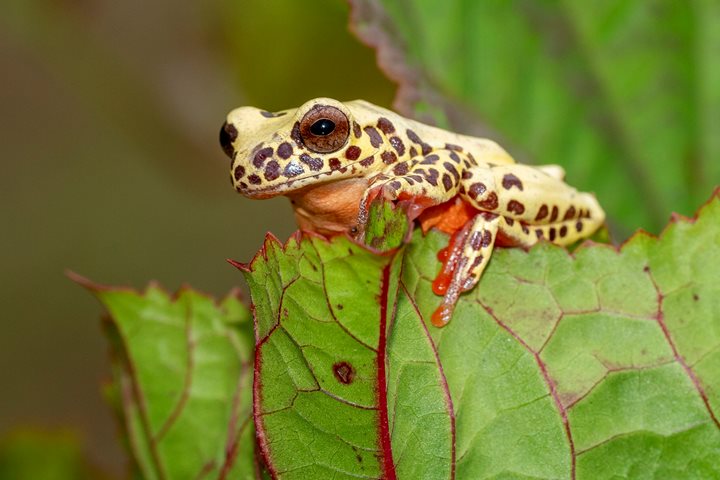One of the last things on your mind when traversing a swaying suspension bridge is to look down, however, it is worth it when you are deep inside the Amazon rain forest. From this unique vantage point the intricacies of this complex ecosystem fade into a carpet of green leaves. Layer after layer the story of species interactions lay hidden in the dense vegetation below.
This morning we explored the “Parque Nacional Amazonico Reserva Natural,” a private reserve located along the Marañon River. We started our hike on terra firma led by our knowledgeable naturalist guides. In the dense forest our view became myopic as we peered into spider webs and examined what lives in an unfurling leaf. On our exploration we found cryptic frogs, Morpho butterflies, and medicinal plants. We encountered two species of monkeys, Saddle-backed Tamarin and the elusive Pygmy Marmoset. These tiny monkeys navigate skillfully through a world of crisscrossed branches and twisted lianas. Once we reached the canopy walk, the view from the bridges was a striking contrast; all the little things we had seen faded away and the immensity of the forest was revealed. In every square foot below us complex interactions were occurring among the plants and animals; each species fulfilling its niche in the ecosystem. This is witnessing biodiversity firsthand.
Back on the boat during our afternoon presentation we discussed how scientists define and measure biodiversity. One method might be to simply count the number of species like the approximately 127 species of reptiles and amphibians here in the Pacaya-Samiria National Reserve. What is more revealing, however, is factoring in the density of those species in a given area and their distinctiveness (e.g. are they found other places or are they closely related to other common organisms?). As a conservation geneticist, I also include genetic diversity as a part of the equation because it is the underlying variability in a population that fuels the evolutionary process through the expression of adaptive traits. This helps to explain why there are so many different types of plants and animals that we are seeing.
With our heads full of knowledge we set out again in the afternoon to explore the tributaries by skiff. As Pink River Dolphins break the surface of the water around us and White-throated Toucans pass overhead, we add new species to our list. However, this exploration of biodiversity is more aesthetic and is captured primarily in our photographs and memories. As much as you can try to define the most biologically diverse place in the world, no words can describe what it is like hear the sounds of the forest, see the reflections on the water, or to feel the warmth on your skin. We are experiencing biodiversity firsthand by being in this wonderful place and knowing we are surrounded by something very special.







